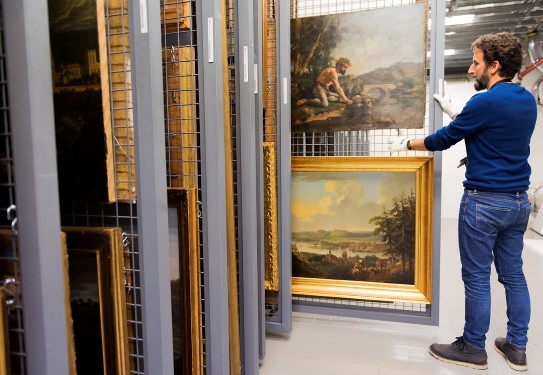Under the Microscope. Gustave Courbet

Fake or genuine? The story of the painting The Fisherman.
For most art museums, it is a challenge to distinguish forgeries from authentic pictures. In particular, many popular French painters fell victim to widespread forgery after their deaths. It has been said of Gustave Courbet that of the 500 pictures he painted, around 5,000 are now in foreign collections. Thanks to new research, it has been possible in recent years to throw light on many false attributions and to expose a number of counterfeits.
Gustave Courbet (1819–77) is considered the standard-bearer of 19th-century realism in French painting. He insisted that pictures should have concrete subject matter and be rooted in visible reality. Historical and mythological themes belonged to the past. It was time for art to address the commonplace.
Courbet’s reputation grew steadily throughout the 1850s. He worked in a number genres, but generally preferred rural themes. He favoured a technique that was fresh and sketch-like, “building” his motifs on the canvas through the impasto application of paint with brushes and palette knives. Since Courbet's works sold well and his style was easy to imitate, others were soon tempted to cash in on his economic success. Few painters have been forged to the same extent as Gustave Courbet.
The artist himself must take some of the blame for this confusion. Burdened by debt, in the latter years of his life he engaged a number of assistants to increase his output to the level of mass production. The widespread forging of Courbet’s pictures continued after his death.
The work Pêcheur à la ligne (Fiskeren / The Fisherman) was donated to the National Museum as a supposedly genuine Courbet in 1947. But French experts cast doubt on the authenticity of the picture. Recent research on the provenance of the picture seems, however, to point in the opposite direction: in all probability Pêcheur à la ligne was indeed painted by the master himself.